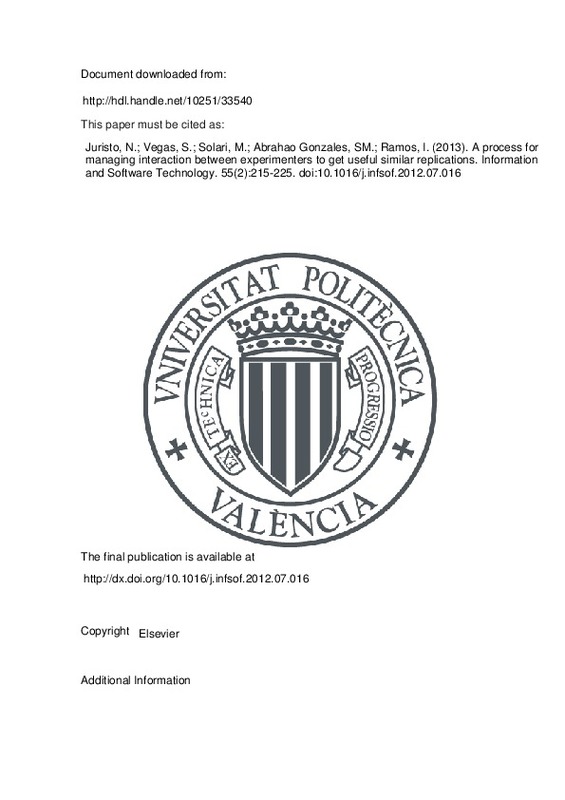JavaScript is disabled for your browser. Some features of this site may not work without it.
Buscar en RiuNet
Listar
Mi cuenta
Estadísticas
Ayuda RiuNet
Admin. UPV
A process for managing interaction between experimenters to get useful similar replications
Mostrar el registro completo del ítem
Juristo, N.; Vegas, S.; Solari, M.; Abrahao Gonzales, SM.; Ramos, I. (2013). A process for managing interaction between experimenters to get useful similar replications. Information and Software Technology. 55(2):215-225. https://doi.org/10.1016/j.infsof.2012.07.016
Por favor, use este identificador para citar o enlazar este ítem: http://hdl.handle.net/10251/33540
Ficheros en el ítem
Metadatos del ítem
| Título: | A process for managing interaction between experimenters to get useful similar replications | |
| Autor: | Juristo, Natalia Vegas, Sira Solari, Martín Ramos, Isabel | |
| Entidad UPV: |
|
|
| Fecha difusión: |
|
|
| Resumen: |
Context: A replication is the repetition of an experiment. Several efforts have been made to adopt replication as a common practice in software engineering. There are different types of replications, depending on their ...[+]
|
|
| Palabras clave: |
|
|
| Derechos de uso: | Reserva de todos los derechos | |
| Fuente: |
|
|
| DOI: |
|
|
| Editorial: |
|
|
| Versión del editor: | http://dx.doi.org/10.1016/j.infsof.2012.07.016 | |
| Código del Proyecto: |
|
|
| Agradecimientos: |
|
|
| Tipo: |
|







![[Cerrado]](/themes/UPV/images/candado.png)


